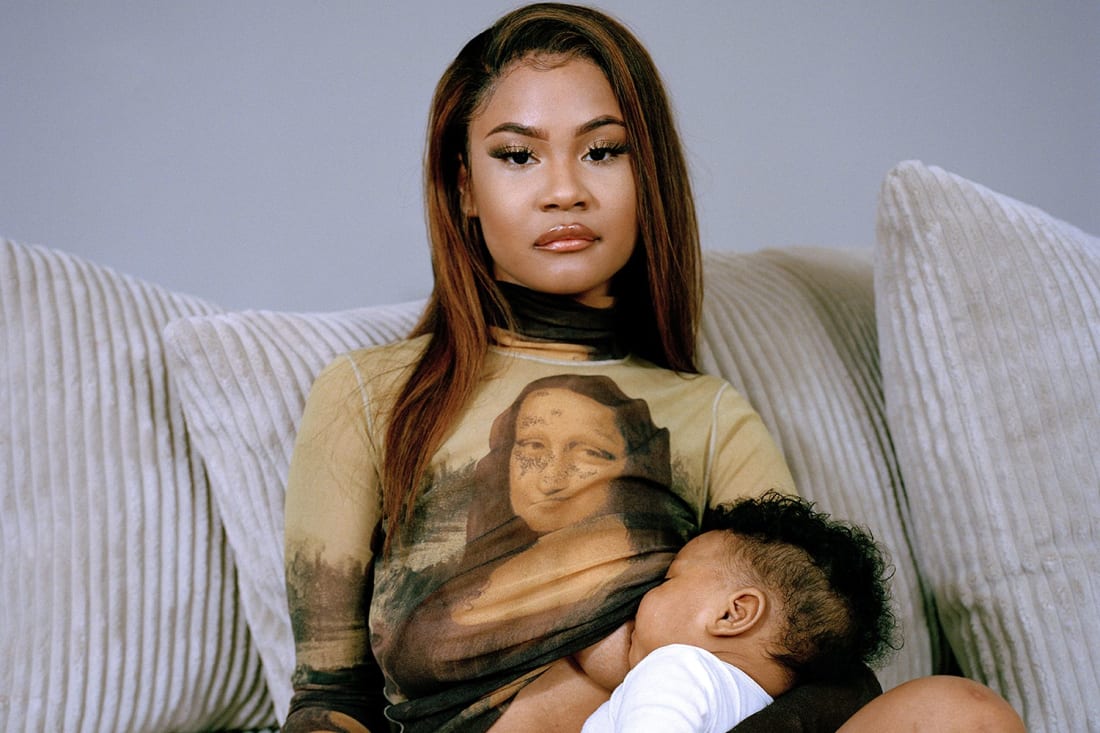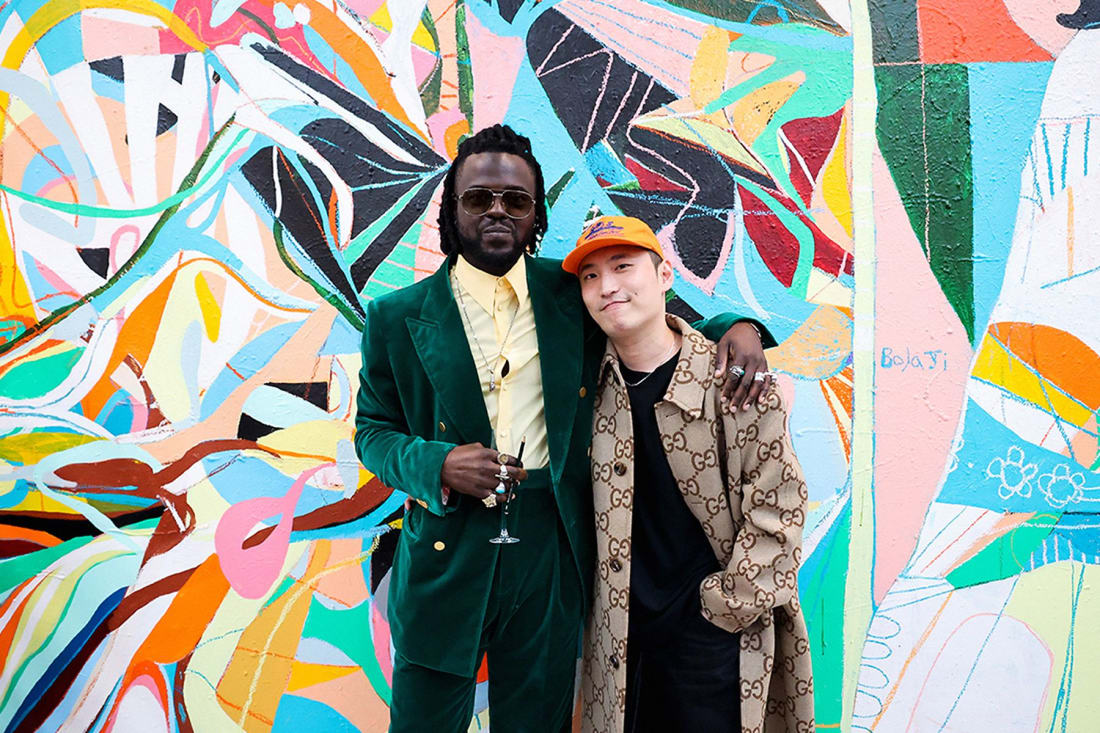Photos of Georgian youth using techno and activism to break free
The image-maker lenses young Georgians breaking away from the country’s Soviet influence through techno, politics and activism
The image-maker lenses young Georgians breaking away from the country’s Soviet influence through techno, politics and activism
Welcome to Stop Scrolling, where each fortnight arts and culture writer Gilda Bruno will be bringing you a roundup of carefully curated exhibitions, art fairs and photo books to check out, as well as exclusive conversations with some of today's most exciting emerging artists.
_**This week, Bruno speaks with Munich-based image-maker Jana Islinger about Droa – Georgia on the move: her photographic exploration of Georgian history, life and culture brought together in a collection of images.
Bavarian image-maker Jana Islinger uses visual storytelling to shed light on individuals whose life experiences are often neglected by mainstream narratives. Relying on the photographic medium to take her sitters’ reality from the fringes straight into the public discourse, her work combines raw, soft-coloured portraiture and testimonials to open up a space for meaningful discussions.
From chronicling the endeavours of young single mothers in Germany and capturing the moments of prayer and communion in the Turkish-German community, to documenting soldiers on the path to recovery from war-induced PTSD, her photography acts as a magnifying glass revealing the personal battles, dreams, and achievements of people coming from profoundly different backgrounds. In Droa – Georgia on the move, Islinger’s latest series, the Munich-based photographer focuses on a young generation of Georgians currently uniting against the country’s pro-Russian government in the name of a more democratic future.
“Located at the easternmost end of Europe, Georgia is caught in the tension of a conflict between pro-Western reorientation and a historically Russian sphere of influence,” she says. Giving the collection a title that translates to “it’s time”, the photographer describes Droa as “a photographic search for the identity of a country [suspended] between the dream of Europe, the fear of Russia and the consequences of years of oppression”. Depicting different generations of Georgians, the project sensitively depicts younger individuals already moving towards a more westernised way of life alongside older counterparts “lagging behind in the transition” due to decades under Soviet rule.
As a selection of photos from the series is on view at Dresden’s Galerie nEuropa until July 13, we speak to Islinger about her encounter with the Georgian youth leveraging nightlife, culture and activism to rebel against pro-Russian influence and rule.
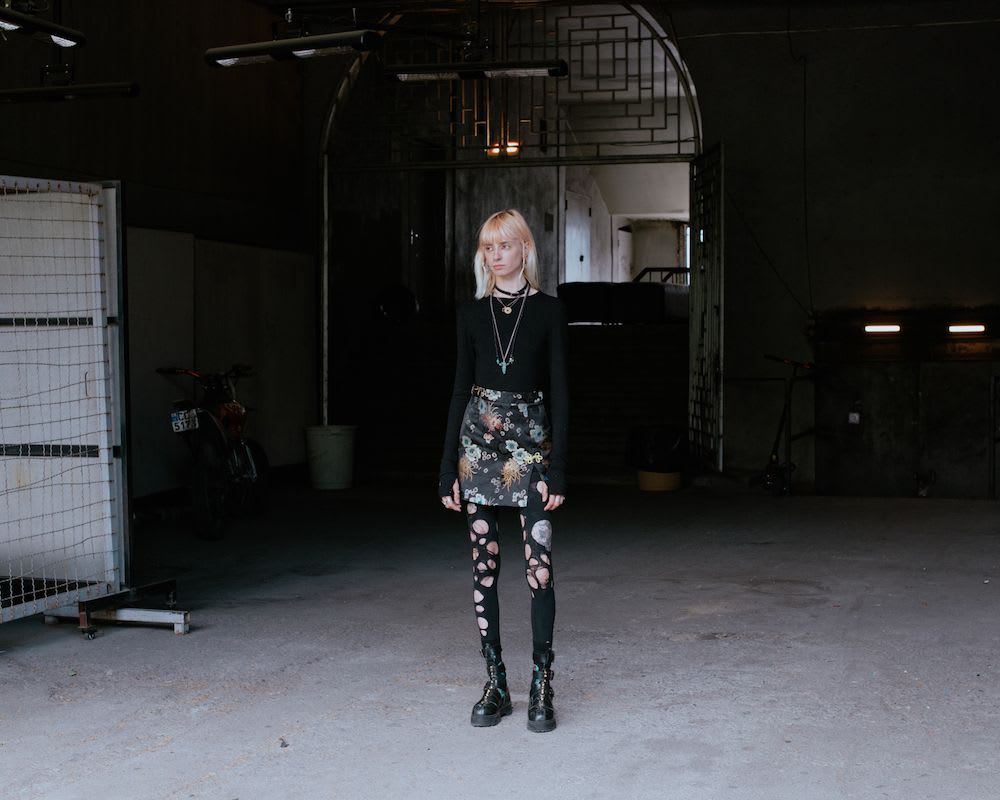
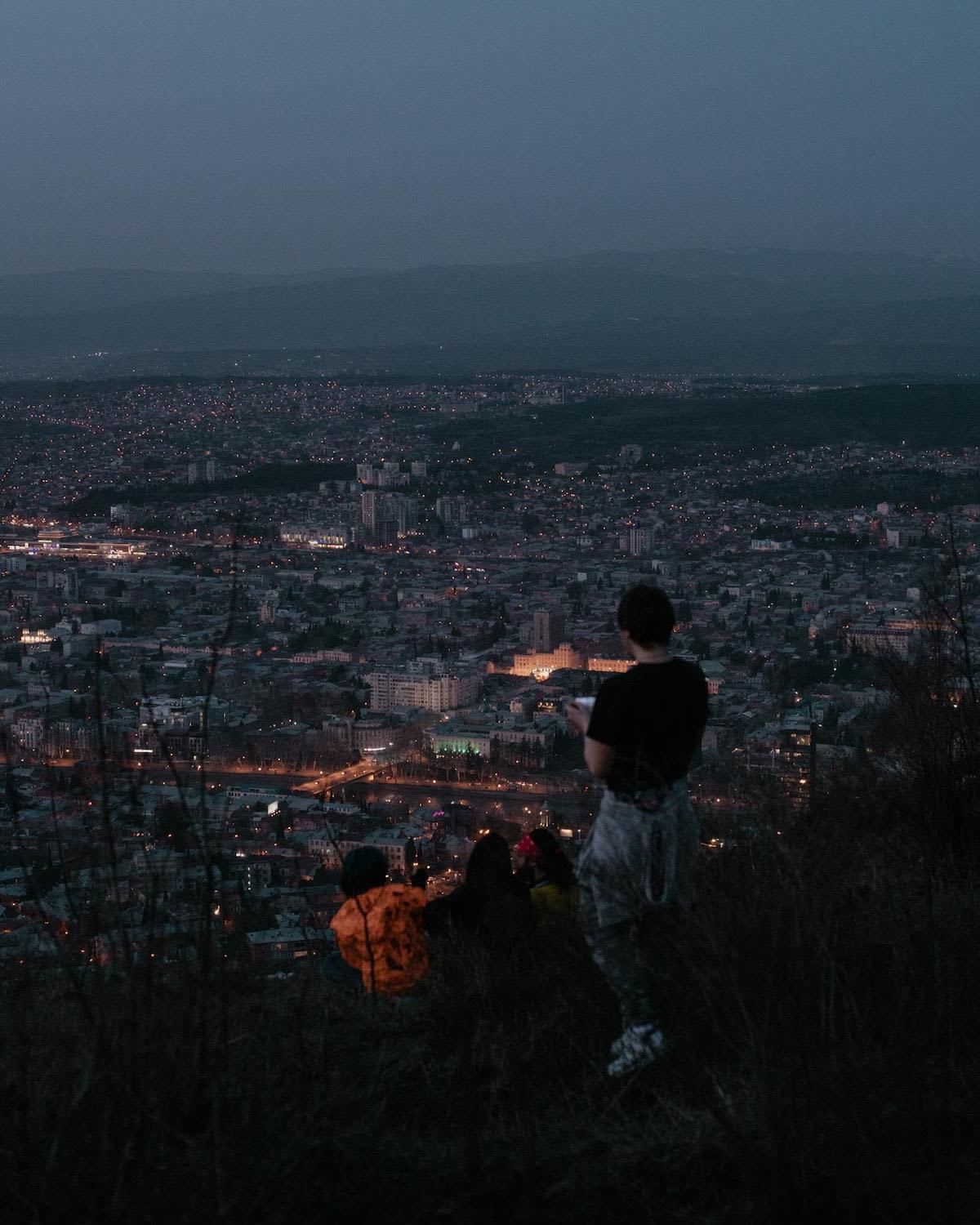
Your photography draws attention to a range of issues affecting the lives of communities worldwide. What made you decide on this direction?
Jana Islinger: My work mainly deals with socially relevant issues. I focus on people and the environment they are a part of: within that, I tend to examine their understanding of identity in relation to the place they occupy in society. Documentary photography grants me the opportunity to immerse myself in the most diverse ways of living and worlds, always challenging me with new questions and prompting me to get to know new people.
Your previous bodies of work explore everything from a Hare Krishna community in a Bavarian forest to the day-to-day running of an Albania's only public football school in Tirana. What kinds of stories tend to capture your attention?
Islinger: Communities are at the forefront of all my projects, each one of them with their own stories and realities. Generally speaking, there isn’t a single reason why I'm drawn to a given place, situation or topic, but multiple ones. In my series on the Hare Krishna community, for example, what caught my eye was the merging of two contrasting worlds – the encounter between an Indian community and the lush vegetation of the Bavarian forest. Even more than that, what fascinated me was the strong faith and beliefs shared by the people living there. My project on Tirana's football school allowed me to tap into what it is like to attend the only Albanian public football institution left untouched by the fall of communism.
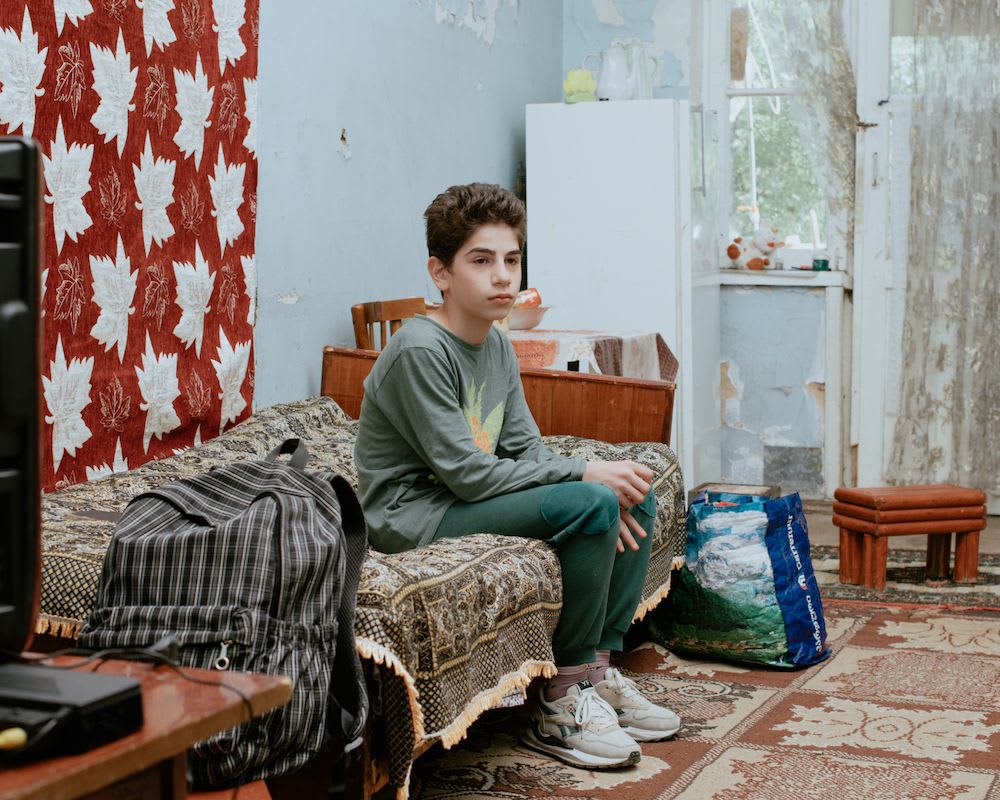
Your series ‘Droa – Georgia on the move’ explores a country “caught between historical Russian influence and a pro-Western dream of Europe”. When did you first hear about the tensions in Georgian society right now?
Islinger: In Georgia, there is a generational conflict that can be perceived everywhere. I first heard about it while reading a newspaper report about Georgian techno culture. For Georgia’s youngest citizens, techno serves as a form of protest against the conservative views supported by the older generation: through it, they get to express themselves, manifesting the freedom they long for. In fact, most Georgian youths want to move closer to the west of the world by joining the EU. The outbreak of the Russian war in Ukraine made the relevance of this divide even more prominent, as there are some parallels between Ukraine and Georgia.
When tensions rose following Russia’s invasion of Ukraine, I decided to use my project not only to examine the generational conflict at the heart of the Georgian population, but to also explore the breakaway territories of Abkhazia and South Ossetia. During my two-month stay in Georgia, I visited several different places and spoke with as many Georgians. Most of the time, I would meet them in their own surroundings. On other occasions, I would start chatting with people on the street, or knock on their doors. I was particularly surprised by the openness and interest in my project: as I spent more time in the region, I kept on making new acquaintances through existing contacts. Without the people I got to know along the way, this series wouldn’t have been possible.
What were your first impressions of Georgia?
Islinger: What I found most striking was probably Georgians’ desire to become part of the EU, which is felt throughout the country. European flags wave everywhere and people are frequently holding protests against the pro-Russian government. While Georgians’ attempts at rewriting the history of their country are an opportunity for them to envision a different life, the fractured social fabric of the nation represents one of the biggest obstacles to their success. Even today, the legacy of the Soviet Union is very present. Still, Georgians’ resolution to fight for a better future is what keeps them going. This March, Georgia’s governing party announced the withdrawal of its “foreign agents” draft bill following days of civil protests. Forcing organisations receiving more than 20% of their funding from abroad to either register as “foreign agents” or pay fines, the proposed law was seen by protestors as both a means of reducing political dissent and a threat to media freedom.
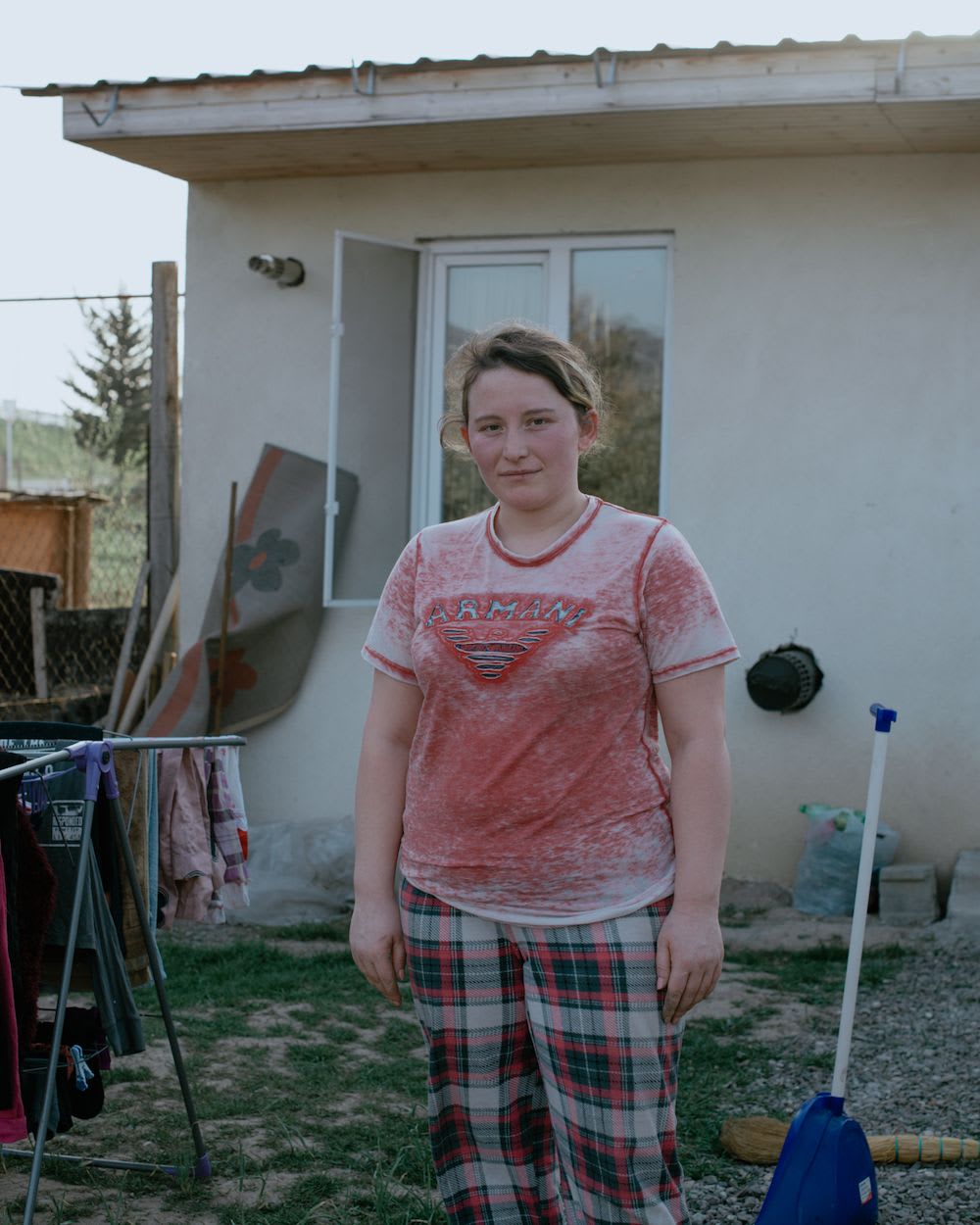
The project centres Georgians’ ongoing search for identity. How are young people in the country coming together to create a new chapter in the history of their country?
Islinger: More than 30 years since the collapse of the Soviet Union, a considerable part of the population – and especially its younger portion – has never experienced socialist education first-hand, only learning about the ideology through their family relatives and their stories. This young generation, which has only known the country in its transition towards a more western mindset, is now coming of age and wants to lead the change themselves. They associate liberalisation and progressiveness with the European way of life. Often their parents and grandparents have conservative values inherited by the Orthodox Church, which has supported them in times of crisis. Part of my work in this area also sheds light on the Shame Movement, one of the most notable youth-led social movements in the country. With a focus on equality and the LGBTQIA+ experience, they are at the forefront of many of the protests taking over the country. They stand in solidarity with Ukraine and dare to criticise the Georgian government and its pro-Russian policies.
‘Droa’ was lensed during the spring of 2022 shortly after Putin declared the start of the Russian invasion of Ukraine. What parallels can be traced between the situations in Georgia and Ukraine?
Islinger: As I touched on earlier, there are two breakaway regions in Georgia. In Abkhazia, between 1992 and 1993 there was a secessionist war that cost thousands of lives and resulted in around 250,000 refugees. In 2008, there was also a five-day war in South Ossetia. Comparable to the situation in eastern Ukraine in 2014, these two areas are also occupied by separatists supported from Moscow. With the Russian war in Ukraine still unfolding, many Georgians fear that Russia will eventually try to occupy their entire territory.
What was the most inspiring exchange you have had while shooting this story?
Islinger: Georgians taught me about war and fight, about the “old times” but also about their hope in a better future. One young woman I have met at some point told me that she is sure that the Georgian people will never turn a blind eye to injustice, that they will never allow Georgia to become Russia and will never return to the Soviet Union. No matter what it takes, they will spare no effort to achieve this goal – her words have stayed with me to this day. Witnessing those people’s desire to join the EU was deeply inspiring. Throughout history, the populations of small countries have always had to bend to the will of more powerful people. Today Georgians reclaim a self-determined life and their right to be part of a free community.
Jana Islinger’s ‘Droa – Georgia on the move’ is open at Galerie nEuropa, Dresden, through July 13
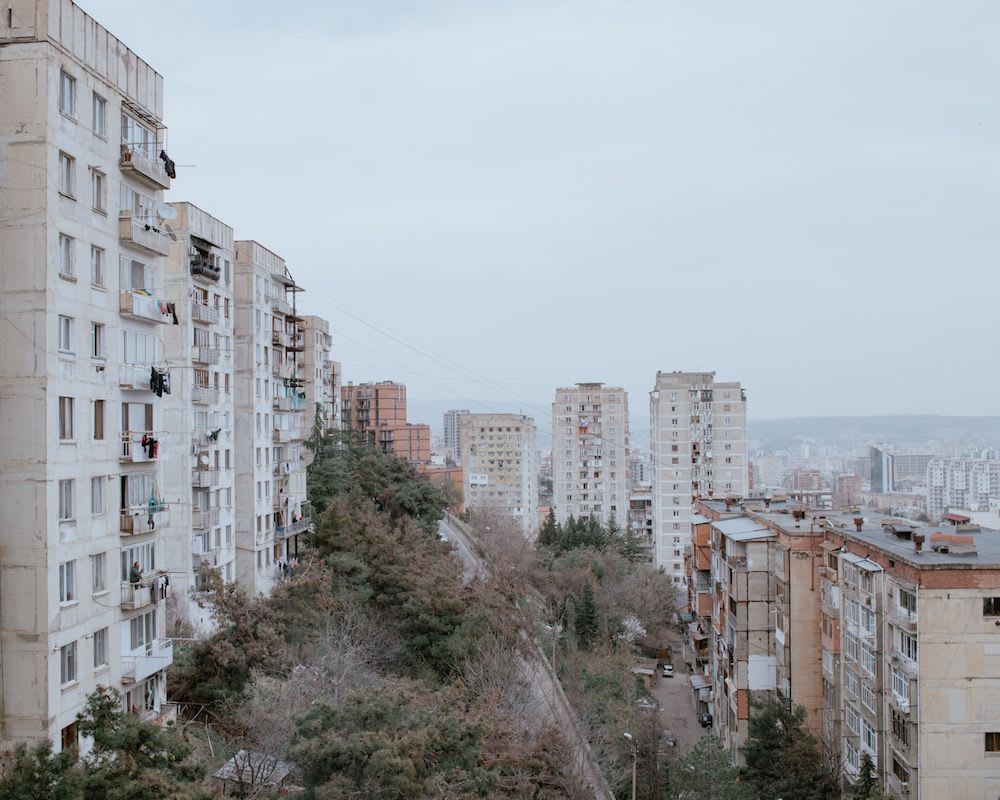
Scroll for an extra dose of art and culture news, curated for you by woo
When there’s so much to see and experience, it can be hard to choose where to spend your valuable time. Below, Bruno picks a selection of newly launched London art spaces to watch in the coming months.
Incubator

Launched in the heart of Marylebone in March 2023, Incubator was born from founder Angelica Jopling’s desire to spotlight the vision of a new wave of emerging artists coming from all walks of life and disciplines. Conceived as a platform for artists looking to amplify their vision and establish conversations with like-minded creatives, Incubator offers a biweekly events programme where poets, dancers and musicians are given the chance to perform in dialogue with – or in reaction to – the works exhibited in the gallery. Part of the Incubator 23 exhibition series, A Woman From the Bird Egg, the platform’s latest solo show, dives into artist Jungwon Jay Hur’s multidisciplinary investigation into themes of vulnerability, honesty, intimacy, and the beauty of triviality.
Jungwon Jay Hur’s solo show ‘A Woman From the Bird Egg’, part of the ‘Incubator 23’ exhibition series, is open at Incubator, London, through June 11
Shoreditch Arts Club

A new private members' club dedicated to the arts has landed at Shoreditch’s TEA building with an exclusive programme of visual arts commissions, exhibitions, talks, live performances, DJ sets, and much more. Named Shoreditch Arts Club, the initiative was founded by Amr Assaad and Matt Yeoman with the idea of “encouraging some day dreaming and future thinking”.
While most events are only open to the club’s members, the general public can access the venue by appointment in order to see its seasonal moving image commission. Following Peter Spanjer’s inaugural show FLOOD OF MEMORIES, Who’s Fear Death – the summer iteration of the audiovisual installation – sees French dancer and visual artist Ndoho Ange utilise movement as a metaphor for her continuous self-transformation, immersing viewers in dreamscapes powered by her absorbing, glitchy visual artistry and poetry.
Ndoho Ange’s summer moving image commission ‘Who’s Fear Death’ is open at Shoreditch Arts Club, London, through August 31
Soup Gallery

One of the most exciting additions to south east London’s thriving arts scene, Soup Gallery has kicked off their exhibition programme with a solo show by British-Lebanese artist Alia Hamaoui. Passing Para-daiza examines the Islamic paradise garden and the car voyage as two archetypes of physical and psychological journeying and invites the audience to step into what feels like a physical extension of the artist's dual heritage. Here, standing out against the white walls of Soup’s newly opened gallery, are neon-coloured UV prints, sculptural pieces and an audiovisual artwork which, bearing references to ancient textile patterns, artefacts and rituals, propel the public into the artist’s own Islamic paradise garden.
Alia Hamaoui’s solo show ‘Passing Para-daiza’ is open at Soup Gallery, London, through June 17
Chemist Gallery

Located in South East London, Chemist is an artist-run gallery with a focus on poetic, speculative and collaborative art crafts. The brainchild of creatives Kineret Lourie and Ariel Caine, the chemists-turned-arts-gallery opened in January as a space combining experimental exhibitions with engaging, accessible conversations around politics and practice. Already having hosted a varied, interdisciplinary rotation of shows, watch this space for more esoteric goodness.
Night Café

Nestled in the heart of Fitzrovia, near London’s West End, Night Café is a newly opened gallery founded by Maribelle Bierens. The mind behind where is the frame? (aka wtf?) – an online editorial and curatorial platform conceived by the London-based curator and art historian to showcase recent arts graduates during the pandemic – Bierens cut her creative teeth interviewing some of the most inspiring names on the emerging local art scene, bringing them to her followers through virtual shows and studio visit write-ups.
Launched earlier this spring, her Night Café gallery draws on the pulsating-with-talent atmosphere of 20th-century Parisian cafés; a place where personalities working across different disciplines could blend in with fellow artists, thinkers, collectors, and other creative minds to share knowledge and envision new ways of engaging with art. It is a vision already informing the artworks exhibited in Fluidity, its inaugural group show, where Hettie Innis, Hawazin Alotaibi, Marc-Aurele Debut, Johannes Bosisio, and Theresa Weber challenge the idea of “the self as a fixed entity”, instead turning to their craft to visualise their ever-shifting, polymorphic understanding of identity.
‘Fluidity’ is open at Night Café, London, through June 17

